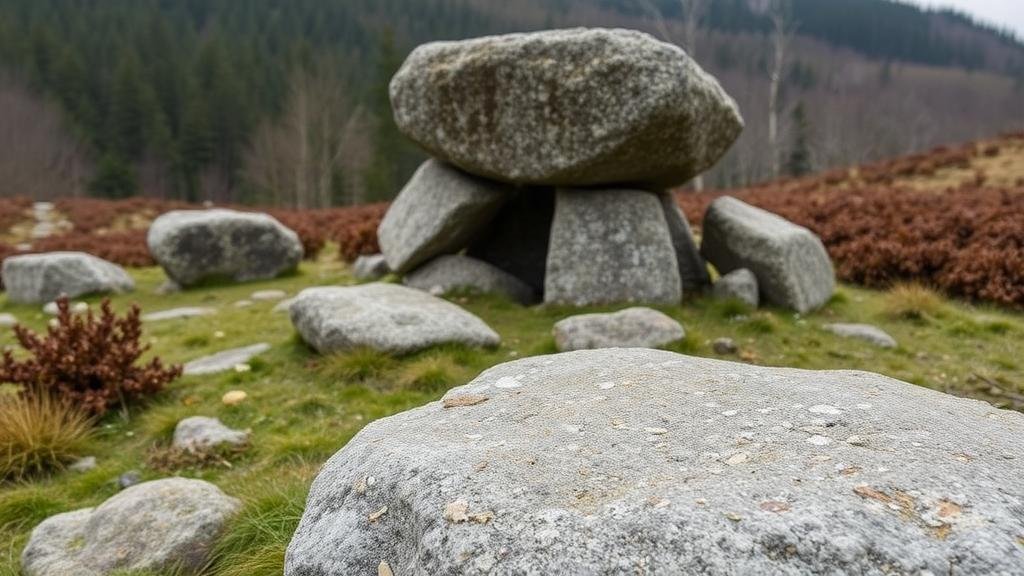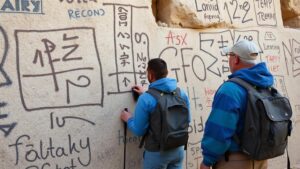Searching for the mysterious “living stones” in Romania’s remote regions.
Searching for the Mysterious Living Stones in Romania’s Remote Regions
Deep within Romania’s rugged landscapes lies a geological phenomenon that captivates adventurers and scientists alike: the living stones. Known locally as pietrele vii, these unique formations are the subject of folklore and scientific inquiry. This article explores their origins, characteristics, and the quest to find them in the remote regions of Romania.
Understanding Living Stones
The term living stones refers to stone formations that display features resembling organic life. Found predominantly in Romania, these geological structures are primarily located in the Transylvanian region, particularly in places like the Hoia Forest and the TimiÈ™ region.
Initial reports of these stones date back to the early 1900s, but they gained wider attention in the 1950s when Romanian geologist Vasile G. Brodănescu studied these natural wonders. The most famous site is the Living Stones of Căpățâneni, which showcase unusual shapes and textures that spark the imagination.
The Alleged Mystical Properties
Local folklore is replete with tales surrounding the living stones. Many inhabitants believe these formations possess mystical properties or are the remnants of ancient civilizations. Some stories suggest that the stones can absorb negative energies and are, in fact, benevolent guardians of the land. Such beliefs have led to a fascinating blend of science and superstition.
One popular local legend states that the stones are the petrified bodies of an ancient tribe, turned to rock by the wrath of a goddess. While these stories are intriguing, they have yet to be substantiated by scientific evidence.
The Geology Behind Living Stones
From a scientific perspective, living stones are primarily made of limestone, a sedimentary rock composed of calcium carbonate. Over millennia, natural erosion and other geological processes have shaped these stones into their peculiar forms. In Romania, the living stones can be traced back to periods of intense geological activity that occurred approximately 30 million years ago.
- Mystery surrounds the peculiar shapes found in the Hoia Forest, which is attributed to mineral deposits and weathering processes.
- The Mushroom Stones near Timișoara exhibit a unique head-and-stem structure, raising questions about the forces that created them.
The Quest for Discovery
Exploring the remote regions of Romania to find these living stones is an adventure unto itself. Nature enthusiasts and geological explorers often embark on journeys through dense forests and rocky terrains. The remote locations can pose challenges, such as navigating dense underbrush and dealing with unpredictable weather. Proper preparation is crucial.
Anyone looking to embark on this exploration should consider:
- Researching the best trails and access points, often available through local hiking clubs or tourist information centers.
- Hiring local guides who are intimately familiar with the areas geography and folklore.
- Equipping themselves with appropriate hiking gear and safety supplies, as the terrain can vary greatly.
Preservation and Conservation Efforts
The living stones are not only of scientific interest but also of ecological significance. Preservation efforts are vital to protect these formations from erosion, pollution, and potential tourist damage. Initiatives like visitor education programs aim to raise awareness about the delicate nature of these geological wonders.
Local authorities in Romania have begun implementing sustainable tourism practices, emphasizing the importance of maintaining the pristine condition of the natural environment. Given the growing interest in eco-tourism, such measures are essential for the ongoing protection of these living stones.
Real-World Applications and Cultural Significance
The study of living stones has implications beyond mere geological interest. Insights into their formation can provide valuable information about climate change and landscape evolution. Plus, these stones have become a cultural emblem for the regions, instilling pride among locals and attracting scientific attention.
For example, geological excursions and cultural heritage tours around these sites are gaining popularity, contributing to the local economy while promoting environmental awareness. Educational programs in schools incorporate the study of living stones to foster a sense of curiosity and respect for nature in young minds.
Conclusion
The search for living stones in Romania is a journey filled with intrigue and adventure. e remarkable geological formations offer a glimpse into the past while connecting generations through folklore, science, and conservation efforts. For adventurers and nature lovers, the quest to uncover the mysteries of the living stones promises unrivaled experiences and a deeper appreciation for the natural world.


